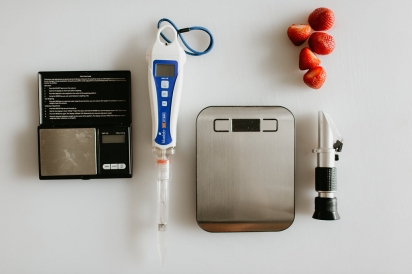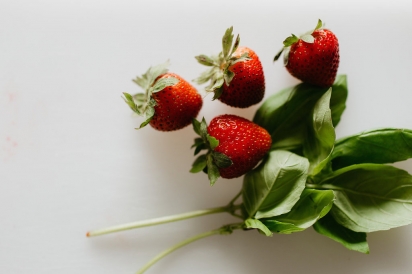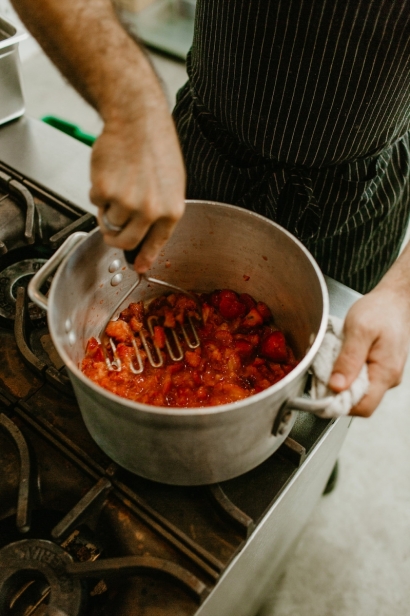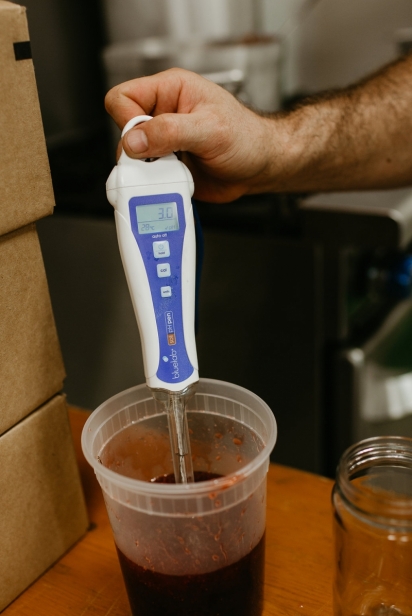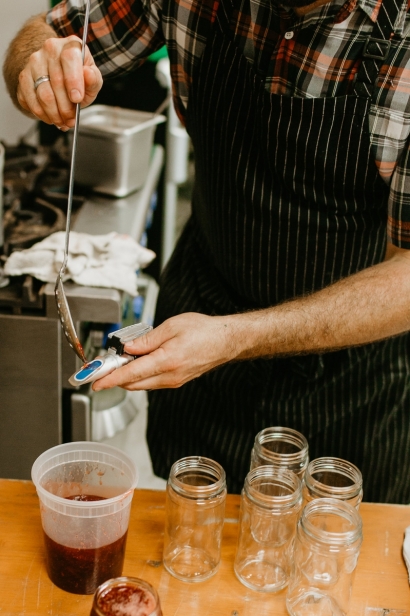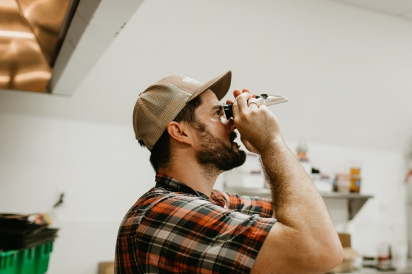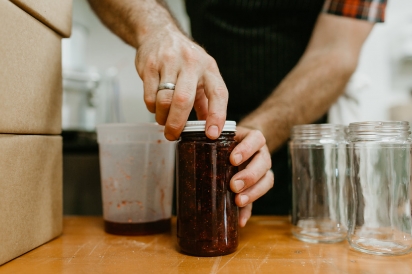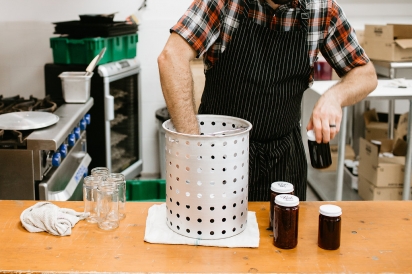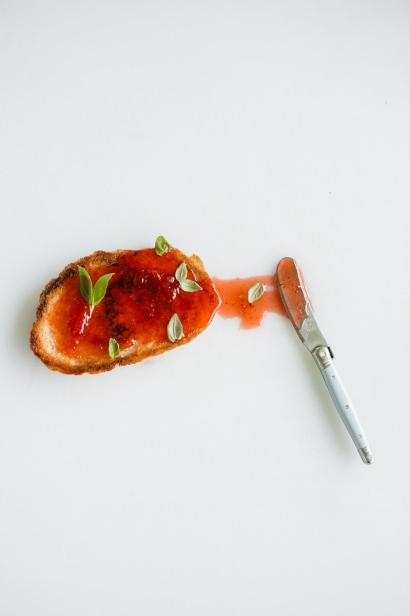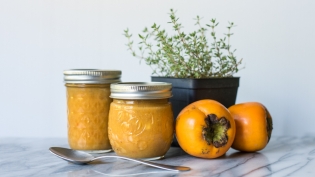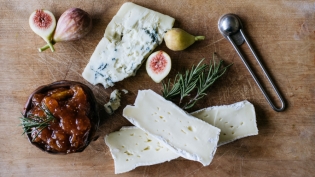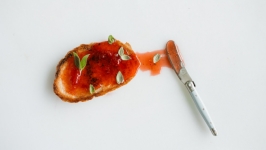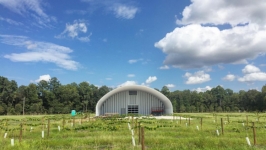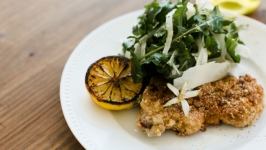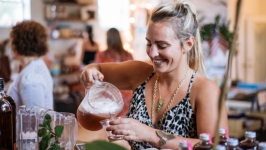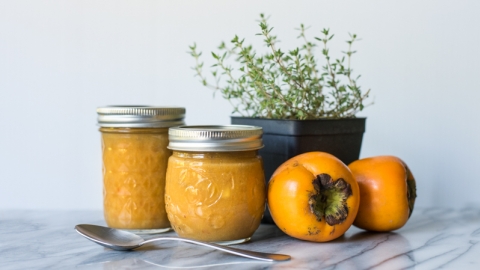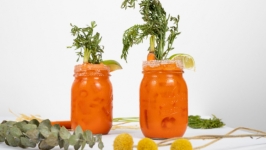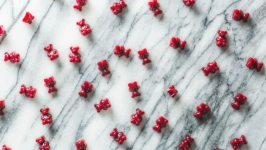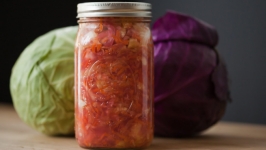The Science of Successful Preserves
As a chef, I have experimented with a wide variety of cooking techniques. Recently, as part of my job, I have been learning how to preserve fruit to produce jellies and jams, those deceptively simple spreads you use on your morning toast. I say deceptive because the dynamics involved with the process of commercially producing jelly, as I am discovering, are far more critical than any other facet of cooking I have experienced.
The reason is simple. Making a jelly or jam isn’t all about the preservation of the fruit. The steps are mostly simple and are very similar to putting up pickles — jar sterilization, cooking the filling, proper jar sealing and post-fill processing. What is proving to be the most challenging part of producing jellies and jams is understanding the why that leads to consistent results.
To have a fair chance of understanding how to make jelly, one must possess a few useful tools. The first is a refractometer, used to measure the amount of soluble solids in a solution. In the case of jams and jellies, this refers to sugar. The refractometer reads the results in Brix percentage, the unit of measure attached to melted (or solid) sugar in a liquid. For regular jellies (not the lower sugar variety), the Brix percentage should be anywhere from 60 to 65 percent, with 65 percent being ideal, and is typically measured when close to filling the jars.
Another tool is a pH meter. This helps to understand the acidity in the jam or jelly. With a Brix percentage of 60 to 65 percent, the pH shouldn’t be lower than 2.8, and no higher than 3.2. I have learned these are the ranges where the end results have been most successful. Although a product made outside of these parameters may be considered acceptable by some, there will be a higher level of inconsistencies.
A gram scale that can measure up to .01/g is very helpful when adding the precise amount of pectin into the jelly or jam. Pectin is a powder mainly extracted from citrus fruits that acts as a gelling or thickening agent in food products. It is a good source of soluble dietary fiber that, when digested by humans, slows glucose absorption and reduces blood cholesterol levels. Pectin is found in large concentrates in apples, oranges, pears, guavas, citrus fruits and some berries.
Generally, conventional pectin requires high sugar levels (high Brix percentage, 60 to 65 percent) to gel. This type of pectin is called high methoxyl or HM. With HM pectin, the high sugar levels help the pectin bind together the fruit, the water from the fruit and the sugar, forming a gel. For a lower sugar jelly or jam recipe (low Brix percentage, 45 to 55 percent), low methoxyl (LM) pectin may be used. This type of pectin does not rely on sugar to form the gel, but there needs to be a presence of calcium. For low sugar jellies and jams, LM pectin, in the presence of calcium, forms a more fractured, brittle jelly or jam, but still produces adequate results.
Failure can be subjective when creating jams and jellies from scratch. Just because a product has not turned out as expected does not mean someone else may find it unacceptable. When producing commercial jellies made from heritage fruit at the farm, however, customers come to expect the same flavor with each jar. The bite, as I refer to it, is paramount. So the challenge is to create a consistent flavor with each batch. It has required much trial and error, sourcing different types of pectin and pectin catalysts. Nowadays, I look forward to the new harvest of the changing seasons as another opportunity to create a memorable product.
Interested in meeting Chef Trey or trying some of his Strawberry-Basil Jam? You can find him regularly at local farmers' markets, or visit Congaree and Penn online and schedule a farm tour!



